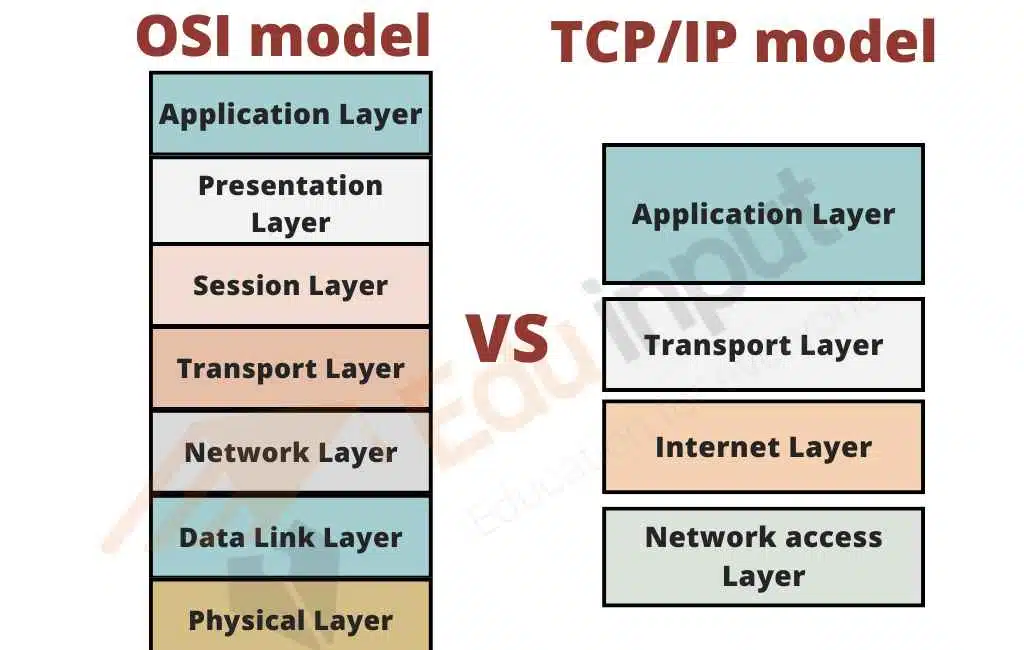Difference between OSI model and TCP/IP model
The difference between OSI model and TCP/IP model is very minor, but by composition, function, features, and purpose, they are very different.
This article will be very helpful to understand the difference between both models.

OSI model
The Open Systems Interconnection (OSI) model was developed by the International Organization for Standardization (ISO). The OSI model consists of seven layers. Each layer serves a different purpose. The topmost layer is the application layer where applications communicate with each other.
The second layer is the presentation layer where data is formatted into a format that the user understands. The third layer is the session layer where two processes communicate with each other.
Layer four is the transport layer where raw bits are converted into bytes. The fifth layer is the network layer where devices connect to each other over a physical connection.
The sixth layer is the data link layer where frames are sent across the physical connection. The seventh layer is the physical layer where electrical signals are transmitted over a wire or cable.
TCP/IP model
The Transmission Control Protocol/Internet Protocol (TCP/IP) model was developed by DARPA. The TCP/IP model consists of 4 layers. Each layer serves its own specific function.
The first three layers are similar to the OSI model while the fourth layer is entirely different. The fourth layer is the internetwork layer where devices connect to the internet.
The fifth layer is called the host layer where devices communicate directly with each other. The sixth layer is called the network layer where devices communicate indirectly with each other. The seventh layer is called the transport layer where devices communicate with the application layer.
OSI model vs TCP/IP model
The difference between OSI and TCP/IP models is given below:
| OSI | TCP/IP |
| The full form of OSI is Open System Interconnection. | The full form of TCP/IP is Transmission Control Protocol/ Internet Protocol. |
| OSI model has seven layers. | The TCP/IP model has four layers. |
| It is developed by the ISO (International Standard Organization). | It is developed by the ARPANET (Advanced Research Project Agency Network). |
| OSI model is protocol-independent. | The TCP/IP model is protocol-dependent. |
| It follows the vertical approach. | It follows the horizontal approach. |
| OSI model standardizes devices like routers, motherboards, switches, and other hardware devices. | The TCP/IP model does not provide standardization to the devices. It provides a connection between various computers. |
| Protocols are unknown in the OSI model and are returned while the technology modifies. | In TCP/IP, returning protocol is not difficult. |
| The header size of the OSI model is 5 bytes. | The header size of the TCP/IP model is 20 bytes. |
Related FAQs
What is the basic difference between TCP/IP and OSI models?
The TCP/IP model is a set of communication protocols that govern which network devices can connect to the Internet. However, the OSI model is a conceptual framework that can be used to explain how a network works.
Which is an older model: TCP IP or OSI?
The TCP/IP model is older than the OSI model.
Name different layers of the OSI model.
OSI model has 7 layers.
Physical layer
Data link layer
Network layer
Transport layer
Session layer
Presentation layer
Application layer







Leave a Reply